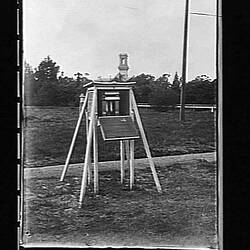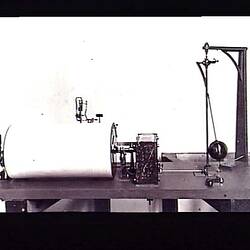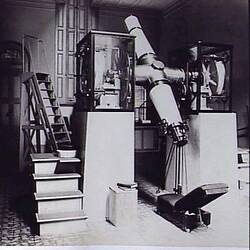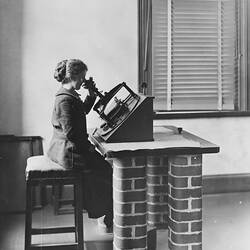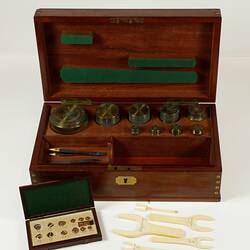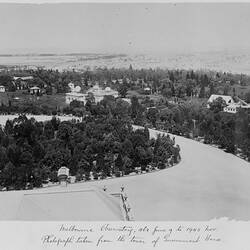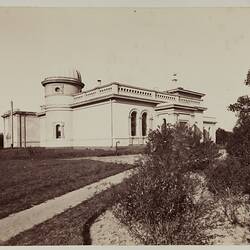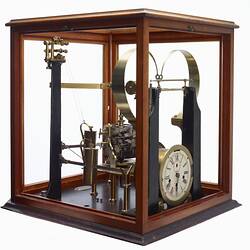Summary
Robinson-type anemometer, used at Melbourne Observatory.
It was made or sold by John B Grimoldi, who operated as a meteorological and scientific instrument maker from Queen Street, Melbourne, 1863-1883.
An anemometer measures the speed of the wind.
Physical Description
Length of arm (axis to centre of cup): 6 inches (15.24 cm). Diameter of cups 4 inches (10.16 cm).
Significance
The collecting of meteorological data was an important aspect of Melbourne Observatory's work from its inception. Just as astronomy had an important practical role to play in navigation, timekeeping and surveying, so the meteorological service provided up to date weather information and forecasts that were essential for shipping and agriculture.
By 1870 Government Astronomer Robert Ellery had a well organised system in place. Meteorological instruments on the east of the Observatory site automatically recorded temperature and air pressure; full records were sent from 7 major country sites, and records of rainfall from another 16 volunteers. This network gradually expanded until by 1893 Ellery was receiving rainfall records from 514 places around Victoria.
This or a similar type of anemometer was erected on the roof of the Melbourne Observatory. This type of cup or Robinson anemometer was invented in 1846 by Thomas Romney Robinson, astronomer at Armagh Observatory in Northern Ireland. The average speed of the rotating cups allows the calculation of the speed of the wind.
Melbourne Observatory introduced a vacuum anemometer in 1881, which automatically traced wind gusts onto smoked paper.
In collaboration with the government astronomers at Sydney and Adelaide, Robert Ellery also established a system of intercolonial weather reports, sent daily by telegraph. By 1877 the three observatories were exchanging weather information twice a day by telegraph, and from 1881 Ellery provided the newspapers with a daily weather map of Australia and a forecast of the day's weather. Information and forecasts were telegraphed to the country stations each afternoon.
The long-term value of the records was also recognised, and in 1919 the complete records of the Melbourne Observatory and its network of stations was statistically analysed and published.
More Information
-
Collection Names
-
Collecting Areas
-
Acquisition Information
Transfer from Melbourne Observatory, 1945
-
Maker
John B. Grimoldi, 81 Queen Street, Melbourne, Greater Melbourne, Victoria, Australia, circa 1880
-
User
Melbourne Observatory, South Yarra, Greater Melbourne, Victoria, Australia, circa 1880
-
Inscriptions
Marked "GRIMOLDI, MELBOURNE NO. 102".
-
Classification
-
Category
-
Discipline
-
Type of item
-
Overall Dimensions
41 cm (Length), 41 cm (Width), 26.5 cm (Height)
-
Other Dimensions
18 cm (Length), 6.5 cm (Width), 6.3 cm (Height)
Dimesion for base unit.
-
Keywords

